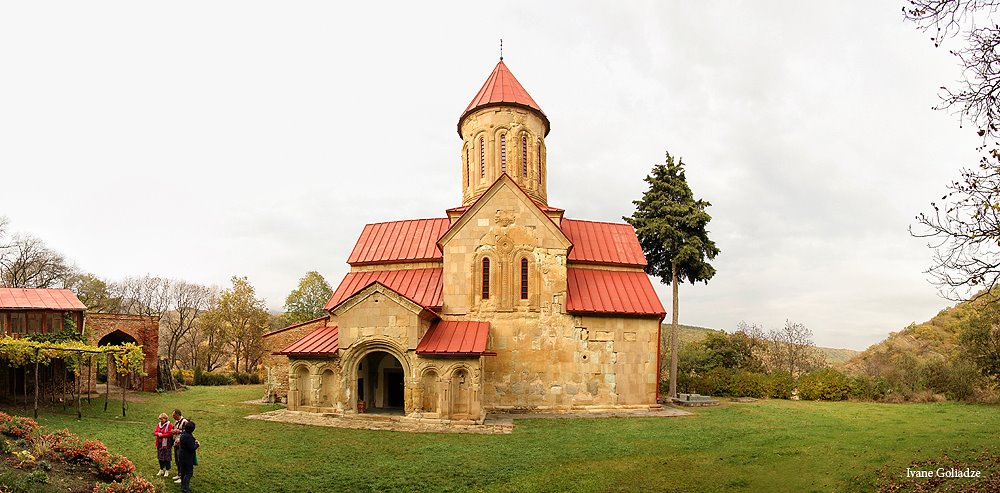The Betania Monastery of the Nativity of the Mother of God is a medieval Georgian Orthodox monastery 16 km southwest of Tbilisi, via Kojori; well-signposted once you’re near, hidden down in the wooded Vere River valley. It is a beautiful piece of architecture from the Golden Age of the Kingdom of Georgia, built at the turn of the 11th and 12th centuries, and well worth a visit for its frescoes which include one of few existing portraits of Queen Tamar.
A series of conflicts and foreign invasions left the monastery depopulated and half-ruined until it was rediscovered by artist Gagarin then restored in the late 19th century by Abbot Ketiladze. During Soviet times, Betania was the only operating Georgian monastery, though unofficially, until 1963 when it became defunct for the next 15 years. In 1978, the Patriarch of Georgia Ilia II succeeded in obtaining permission from the Soviet authorities to reopen the monastery at Betania and in the 1990s, the cloister was refurnished and the local monastic community began to grow.
The monastery is surrounded by a large wall, outside which you will see a vegetable garden and fruit trees. Note- before you enter, women should cover their heads, shoulders and legs (shorts, above-knee skirts and trousers are considered disrespectful), and men should be in trousers, not shorts, and shirts covering their shoulders. Inside the wall is the domed church of the Nativity of the Mother of God (constructed in the 12th - 13th centuries), the small church of St. George (1196), and a ruined tower.
Inside the church you’ll see numerous damaged and degraded frescoes, most notable of which is the royal group featuring King George III (r. 1156–1184), his daughter Queen Tamar (r. 1184–1213), and King George III (Tamar’s son, r. 1213–1223).
After all that walking and admiring, head back out onto the road and choose a spot for a picnic: there are plenty of fields and wooded areas on the way back to Tbilisi that are good for it (please be aware of fire regulations and take your rubbish home with you!), while the best restaurants are found closer to the city on the Kojori Highway.
Photo by Ivane Goliadze

